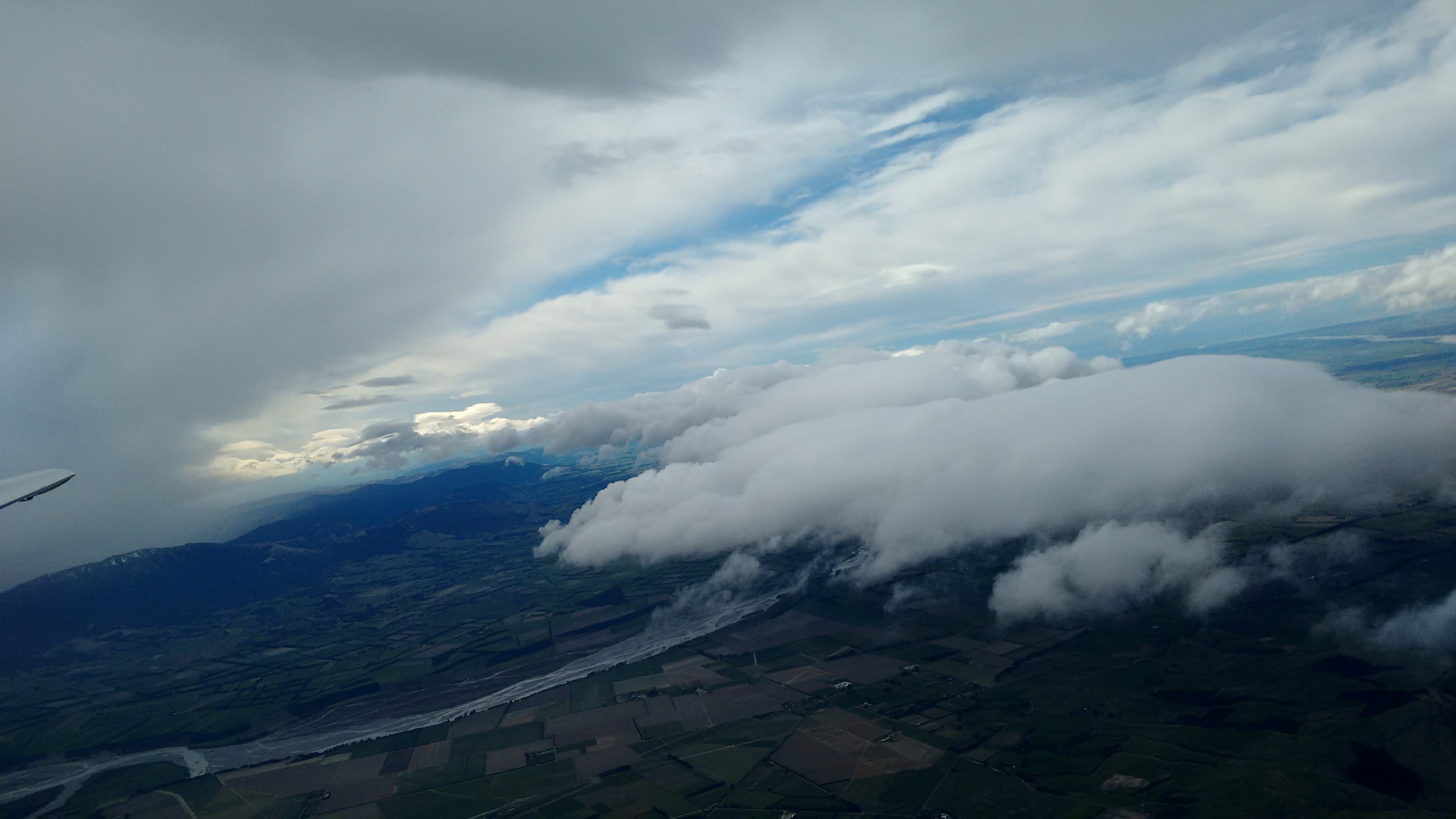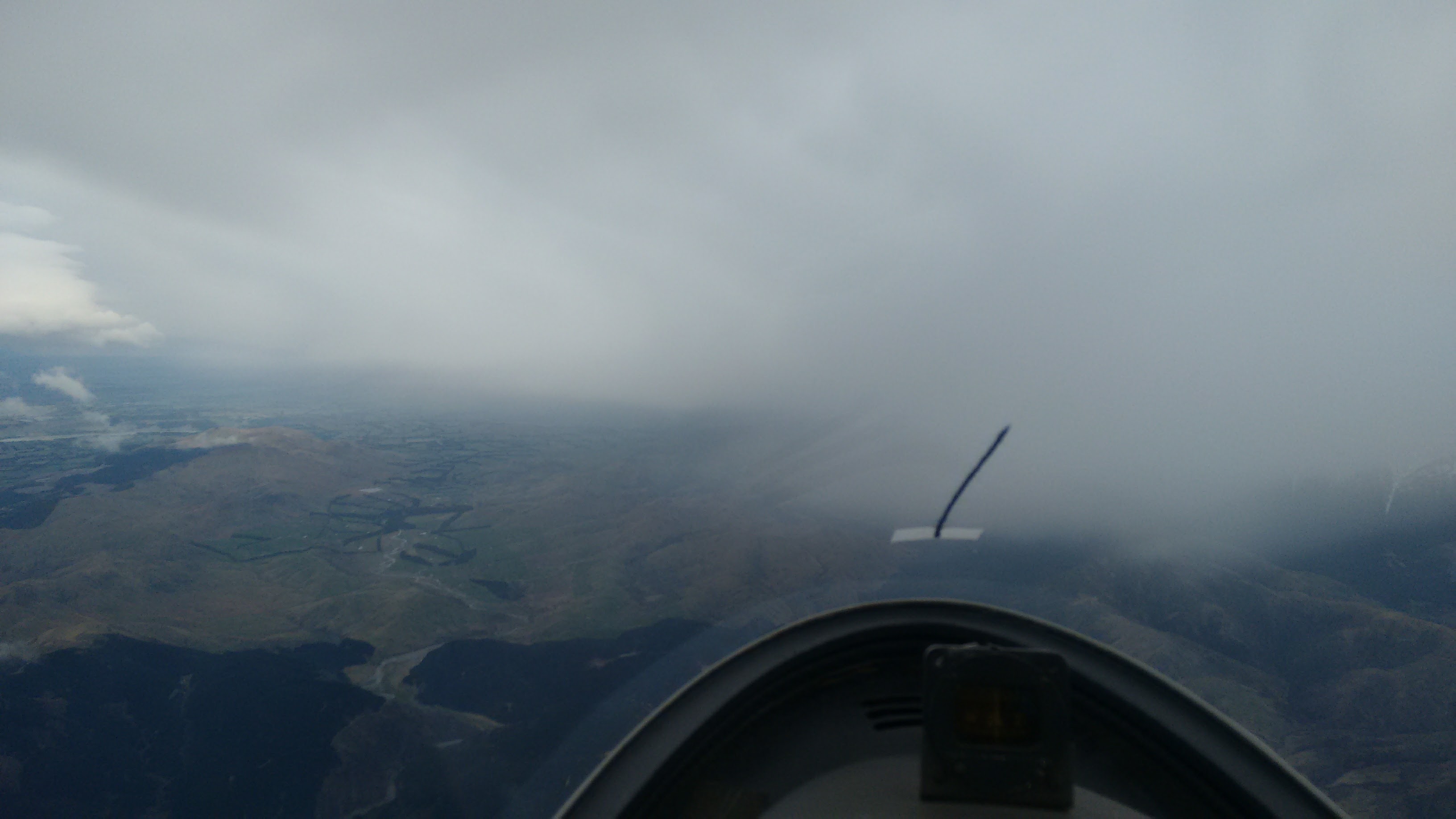One morning in the middle of September, the weather was less than ideal (westerly with intermittent showers), my brother and I were duty pilots at Springfield.
I had already DI’d ZK-GPR and it was lined up for 04 and waiting. After some discussion, the duty instructor decided that if we were going to go, it was now or never. So we hopped in and did the checks.
We took an aero-tow slight east of the field, to somewhere above 4500ft. Compared to my previous experience, this aero-tow required a lot of work. Multiple times full control deflection was required to maintain control, and I discussed with the instructor about abandoning the tow, but I stuck with it. In the end, the instructor abandoned the tow because he couldn’t stand the rough ride anymore.
Once off-tow, we headed west. Even with a moderate air-speed (60~70kts), it took a considerable time to pass north of the airfield again. Not long after releasing from the tow, we hit the rotor and started climbing up into the mountain wave. My instructor contacted Christchurch control and activated G976 (defunct since 9 Nov 2017 when G951 and G952 were created), to allow us to climb to 9500ft south of the railway lines.
The wave was incredibly smooth, and very well marked. It is likely that we could have made all the way to Kaikoura (getting back might have been more tricky). Even the second and third waves were well marked.

Weather towards the west was wet. A couple of times I pushed too far west, precipitation developed on the canopy and visibility reduced to nil.

After some training in the effects of mountain wave (and the high wind speed) on turn radius and avoiding the sink (on the back of the wave). I was instructed in some high bank angle turns (think: looking at the ground straight down the wing). The instructor even demonstrated making the turn tighter by pulling back on the stick (which inducing some extra g-force).
To avoid the rough air experienced during the aero-tow and for some extra training, after getting west of the field, I had a go at using turning and air-brakes to increase descent rate. Landing on 28 was achieved by using a high safe speed near the ground (70kts+) to compensate for the wind strength. We turned base before the boundary of the field to avoid drifting too far from the runway before turning final. Turning final, I thought I was going to be high, used the airbrakes and promptly put them away. Safely landed and put the glider away.
Only one other glider went flying that day, but the passenger couldn’t deal with the tow and so the returned home shortly after release. The rest of the day was a write-off because of intermittent showers.
